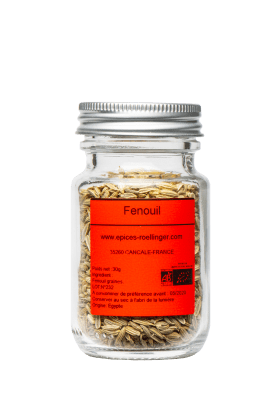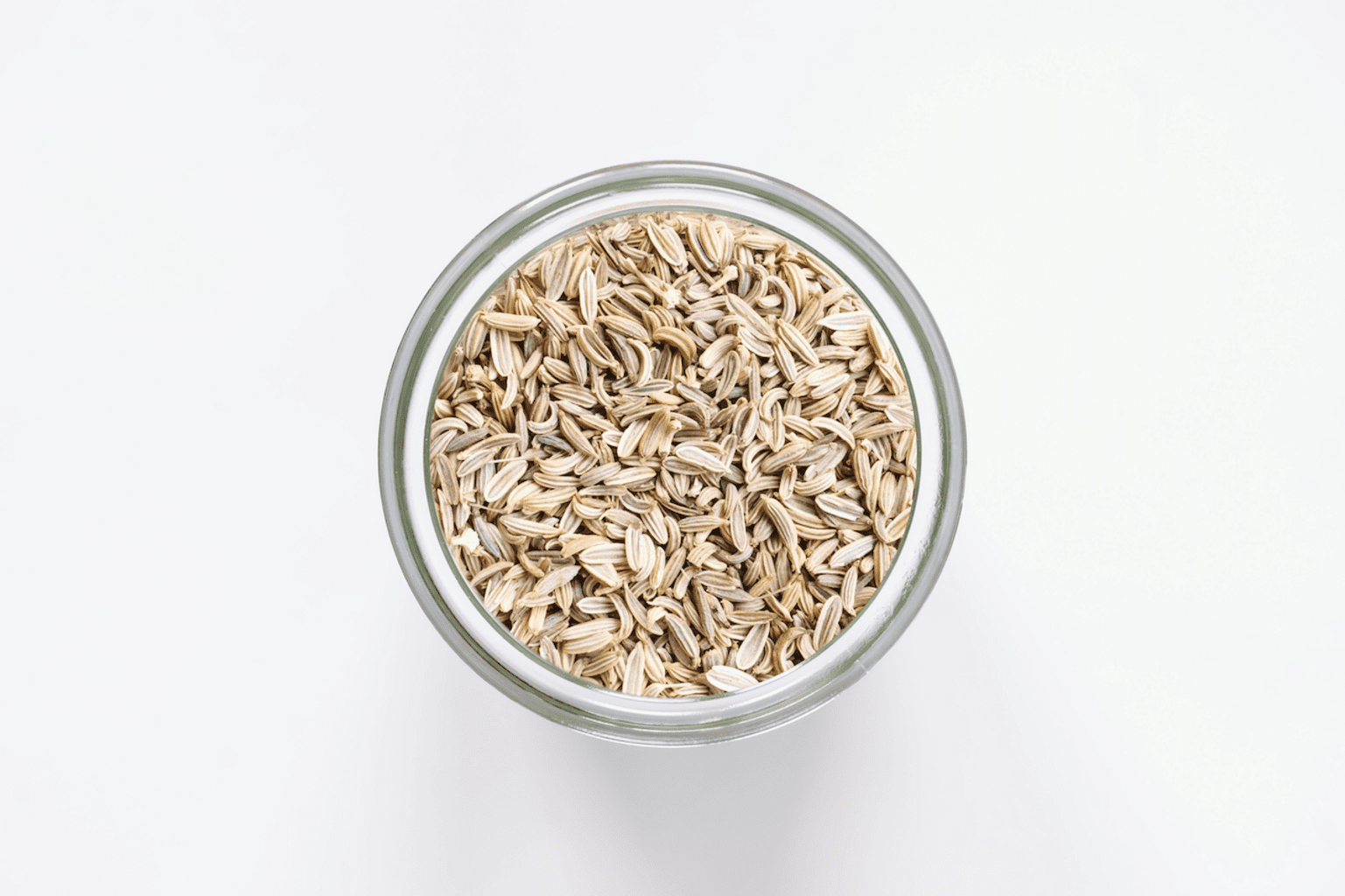Fennel

-
Allergens
Absent, except for cross-contamination.
May contain traces of sesame, celery, mustard, soy. - Origin Egypt
- Storage / Use In a cool, dark, dry place.
Olivier Rœllinger's words
Story
Fennel (Foeniculum vulgare) is an herbaceous perennial that belongs to the Umbellifereae plant family. The plant is found throughout the Mediterranean basin from Egypt to Madeira, and also north along the Atlantic to Brittany and Cornwall. It is abundant in Asia as well. Today, India, China, and Egypt are the three primary producers of fennel seeds.
Fennel produces oblong green and yellowish-brown seeds with paler-hued ridges. Fennel seeds have an anise flavor. They contains anethol, an aromatic essential oil also found in star anise and green aniseeds.
In the Middle Ages, the 12th century nun and botanist Hildegarde de Binge wrote, ‘The [fennel] seed’s warming properties are good for health.’ At the time, fennel was one of the four warming, carminative spice seeds cultivated along with coriander, green aniseed, and caraway.
In India, fennel seeds are part of the pan masala spice blend served at the end of each meal. Our Rêves d’Etoiles herbal tea contains fennel and we recommend enjoying a cup after a meal. We also use fennel seeds as a foundation spice in our curry powders and garam masala blend.
The bulbous fennel variety prepared as a vegetable is Florence fennel (Foeniculum vulgare Florence azoricum) which was hybridized in Italy in the 16th century.
